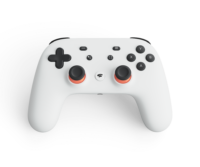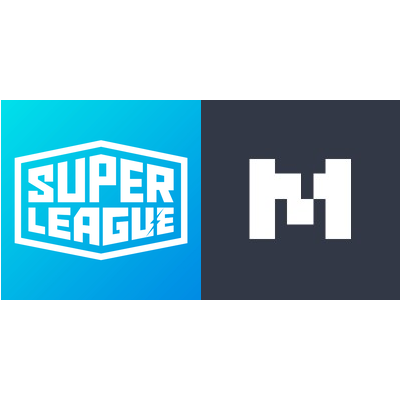Hands-on With Google Stadia: The Future of Gaming?
by on 18th Nov 2019 in News


Late last week TheGamingEconomy headed to the upper floors of Google’s central-London offices so as to spend a little time hands on with Stadia.
Even in the few days since that preview opportunity, updated news about the platform’s arrival has continued to land. Many were disappointed that the console would launch with 12 games – only one being a platform exclusive. Now there is some surprise that with little time until launch, that list has leapt to 22 titles.
As other players like Microsoft continue to assert their cloud gaming ambitions, Google has perhaps confused some potential consumers. Firstly, there has been the news that pre-ordering customers might not receive all their kit on launch day. Furthermore, as reported by Eurogamer, on day one Stadia will feature no family sharing support or achievements UI, will lack some multiplayer features, will not include the much talked about Buddy Pass, and streaming without a Chromecast Ultra will mean no 4K, HDR or 60FPS.
It’s not entirely unreasonable to consider that Google is quite sensibly – and unofficially – taking something of an open beta or soft launch-like approach, easing out features with a view to improving them based on feedback from mass consumer adoption. It might just be more sensible if that were officially part of the plan. The game playing public in 2019 are well versed in the likes of beta's for incomplete games and services. That hypothetical aside, however, there has been plenty to cause head scratching from industry and consumers alike.
All that fades away – at least for a moment – when you actually pick up a game via Stadia, and leap from using a TV to using a mobile.
There has been so much coverage and promotion of Stadia of late that we might have become desensitised to its magic. We all know, after all, that it is a cloud-based gaming platform that provides access to games on distant servers; and those kinds of services have existed for many years now. Stadia, however, promises fluid high-resolution gaming with the ability to hop instantly between various display options such as a Chromecast-powered TV, a mobile phone or a PC. The gameplay should be very similar on each device, because it is the server room that brings the gaming muscle.
Picking up a Google Stadia controller – the official pad for the system – we leapt into a live game of Destiny 2. Playing on a large TV it all feels very familiar. It might not be the same as playing with display optimised on a high-end gaming PC, but there’s nothing to turn your knows up at. Destiny 2 feels like Destiny 2. So far, so good.
https://www.youtube.com/watch?v=inxIiG8lNRI
Then we hop from the TV screen to playing on an Android phone wired up to a Stadia controller. Destiny 2’s game world appears on screen immediately. For a very few seconds there’s a little jumpiness as the game catches up with itself; we’re told it’s a nuance of the pre-release build we’re playing. Fair enough; preview builds don’t always behave. And we can forgive that (for now), because suddenly playing the very same online-connected game of Destiny 2 on a mobile screen is quite remarkable. This is the kind of experience previous generations of cloud gaming such as OnLive and Gaikai promised. This isn’t a pared back or reworked Destiny 2; it is Destiny 2, and a small screen actually makes the resolution look remarkably sharp.
Next up it’s the 2018 action-adventure Shadow of the Tomb Raider, and the experience is broadly similar. There’s the same ‘buffering’ sensation in the first few moments after switching between platforms - 'review build' is apparently the cause once more - but things play well. The controller, it should be noted, is comfortable and robust, and a Stadia app that lets you manage devices, games and target platforms is functional and useful, if a little pedestrian.
A real test of any cloud gaming technology, however, is how it manages ‘input latency’, which is often labelled as ‘lag’. The terms describe a delay between pressing a button and that input being realised on-screen. Input latency is more affecting in some genres than others. As such, we picked Mortal Combat X as our next Stadia game to try out. In fighting games fractions of a second can make a huge difference, such is their speed. That makes them an ideal testing ground for lag. There was little-to-no perceptible lag in Mortal Kombat X. A professionally competitive fighting game esports specialist might pick up on something, but it seems that Stadia really can hold its own with streaming quality and input latency. That’s a delivery essential to its success, and an impressive technical achievement.

Google's Stadia lead Phil Harrison introducing the platform's controllers.
At its core Stadia appears competently functional. If those game loading imperfections are ironed out for launch – and if our struggle connecting a second controller for Mortal Kombat X was only down to human error – the Stadia seems to have hit the ground running as a platform.
The thing is, it’s a service as much as it is a platform. More so, it is a paid-for service, with users able to subscribe and pay for individual titles. And on that front, Google has a good degree of progress to make. The aforementioned launch shortcomings really matter, and it is early adopters and pre-ordering customers – all potential evangelists for Stadia – that may feel the most pain in waiting for a feature-complete offering.
Stadia is poised – at least based on a set-up likely carefully curated by Google – to make good on its fundamental deliverable; quality gaming experiences without the need to invest in powerful hardware at the client side. However, it may be that a good number of potential users are turned off by early reports of delayed features.
That could well pass, with Google’s sheer might and persistence gradually moving Stadia towards being a bona fide stalwart of living rooms, desktops and mobile phones across the world. But for its opening days and weeks, Stadia seems likely to remain one to watch, over an essentially purchase for the layperson.
Cloud gamingesportsGamingHardwareMicrosoftPCPlayersTechnologyUncategorized







Follow TheGamingEconomy